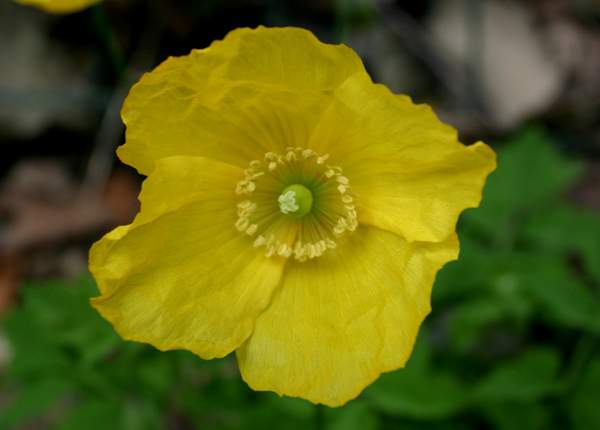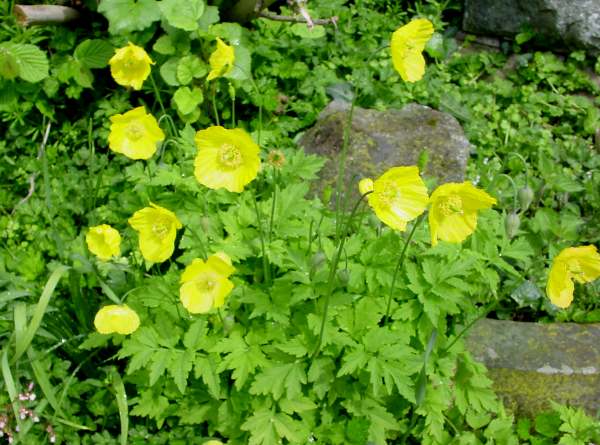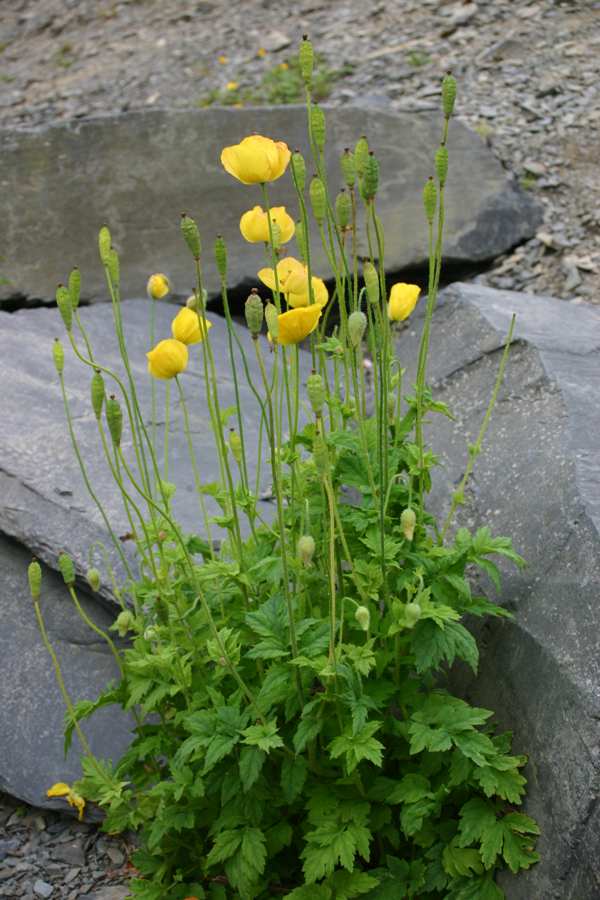Meconopsis cambrica - Welsh Poppy
Phylum: Magnoliophyta - Class: Equisetopsida - Order: Ranunculales - Family: Papaveraceae

Description
This hairless perennial, with pinnately multiply-divided leaves, has yellow or orange flowers with four overlapping petals, a four-part stigma and numerous anthers, The petals are backed by four hairy green sepals that fall off when the flowers open. Flowers, which are up o 7.5cm across, are borne singly on thin green stems typically 40cm in height but occasionally attaining 60cm.

Distribution
Despite its name, Welsh Poppy is widespread throughout the western part of Britain as well as eastern Ireland; it occurs as a garden escape elsewhere. This plant is native to Europe, and in mountainous areas it can be found as far south as parts of northern Spain and Portugal.
Blooming times
In Britain and Ireland, Welsh Poppy blooms from June to August.

Habitat
Welsh Poppy is particularly fond of damp, shady places and is often found where woodland borders a river or stream.
The fine clump of Welsh Poppies pictured below was photographed in the Mawddach Valley in Wales.
Etymology
The specific epithet cambrica comes from Latin and means 'of Wales'.
Sue Parker's latest ebook is a revised and enlarged second edition of the acclaimed Wildflowers in the Algarve - an introductory guide. Full details here...
Buy it for just £3.95 on Amazon...
Please Help Us: If you have found this information interesting and useful, please consider helping to keep First Nature online by making a small donation towards the web hosting and internet costs.
Any donations over and above the essential running costs will help support the conservation work of Plantlife, the Rivers Trust and charitable botanic gardens - as do author royalties and publisher proceeds from books by Pat and Sue.



